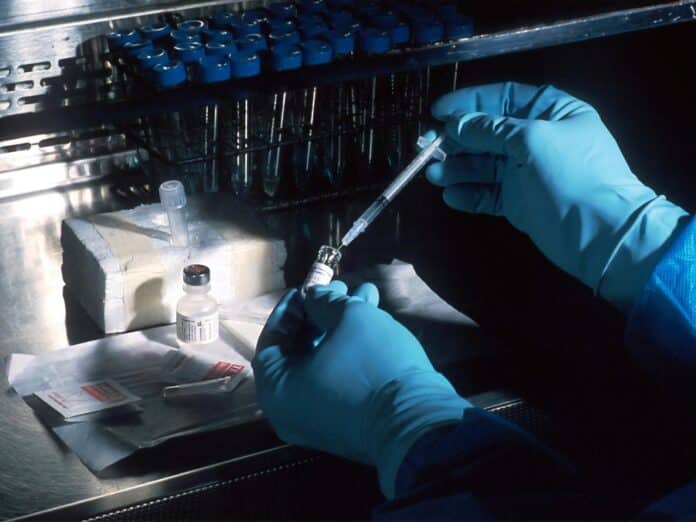Many preclinical, clinical, and commercial pharmaceuticals, as well as natural compounds, contain cyclopropanes. Cyclopropanes are a ring of three connected carbon atoms in which one carbon is attached to the rest of the drug molecule, and the other two are attached to two hydrogen atoms. Many pharmaceuticals have chemical structures that can be used to increase their effectiveness.
Conventional techniques only operate with limited compounds and require highly reactive and possibly dangerous materials. Strained three-carbon rings are significant elements of a wide range of natural goods, medicines, and agrochemicals. Many chemical synthesis techniques still use delicate double halogenated carbon centers or hazardous diazo reagents. They are an essential component of many drugs, and adding them to drug candidates can be an important part of the drug discovery process.
The metal-catalyzed reaction of an alkene with a diazo alkane, a very energetic reagent requiring strict safety precautions, is the most common method for their synthesis.
Penn State researchers have demonstrated a safe, efficient, and practical method for producing cyclopropanes on various molecules utilizing a previously unknown chemical mechanism. This innovative technique can change this critical process during drug research and production.
Many medications now approved by the U.S. Food and Drug Administration contain cyclopropanes, including those used to treat COVID-19, asthma, hepatitis C, and HIV/AIDS. These structures can boost a drug’s potency, change its ability to dissolve in the body, reduce interactions with undesired targets, and improve overall performance.
Ramesh Giri, professor of chemistry at the Eberly College of Science at Penn State and research team leader, said, “Previous efforts to improve the creation of cyclopropanes have focused on altering a mechanistic pathway devolved more than 60 years ago. We approached this differently and identified a new, simple, practical, and broadly applicable pathway.”
The novel process converts alkenes, chemically specialized chemicals in synthesizing numerous substances, into cyclopropanes. The technique uses “radical chemistry,” in which some carbon atoms are left with unpaired electrons during intermediate reactions, known as “free radicals,” which speed up the reaction.
The new method initializes the reaction with visible light and uses common chemical components such as oxygen. All the features utilized in this pathway are commercially available or easily created in the lab. They do not require any particular safety precautions and can be stored for extended periods. The reaction is simple and safe enough to include in an undergraduate chemistry lab.
For producing cyclopropanes, traditional methods only function well with simple compounds. Cyclopropanes are often installed early in the synthesis when the molecule is less complex. However, subsequent stages can cause the ring to open up; they require subsequent attempts to produce molecule derivatives to return to those early steps. The researchers used the new technique to successfully convert a wide range of alkenes with varying degrees of complexity into cyclopropanes. It includes pharmaceutically significant molecules such as the steroid estrone, penicillin, and vitamin B.
Giri said, “All of the ingredients used in this pathway are commercially available or easy to create in the lab and do not require any special safety precautions, and the end product can be stored for prolonged periods. We can add all the ingredients together in one mixture while exposed to air with as little as 10% oxygen, and it proceeds in one step. The reaction is simple and safe enough that we plan to include it in an undergraduate chemistry lab.”
Some ingredients can also be swapped to add chemical groups to the end product. They can be used to achieve a variety of medicinal aims. One of the reaction’s constituents is methylene, which comes in hundreds of distinct commercially available forms. When cyclopropane is formed, this unique chemical group distinguishes methylene or other groups that may be added to an alkene. The researchers used 19 distinct methylene compounds to demonstrate the scope of the new approach.
The researchers discovered that all possible levels of molecular complexity It could be found during medication manufacturing. Traditional methods can sometimes produce the same end product with low steps. Standard approaches would be ineffective in other cases because the initial alkenes are too sensitive or complicated. The new technology is not only safer. It is more efficient and practical than old methods but has a broader range of applications.
This method can potentially revolutionize how alkenes are cyclopropanated in the future, which could have significant implications for drug research, development, and creation.
The U.S. National Institute of General Medical Sciences and Penn State funded this research.
Journal Reference:
- Dhruba P.Poudel,Raj Kumar Tak, et al. Photosensitized O2 enables intermolecular alkene cyclopropanation by active methylene compounds. Science. DOI: 10.1126/science.adg3209
